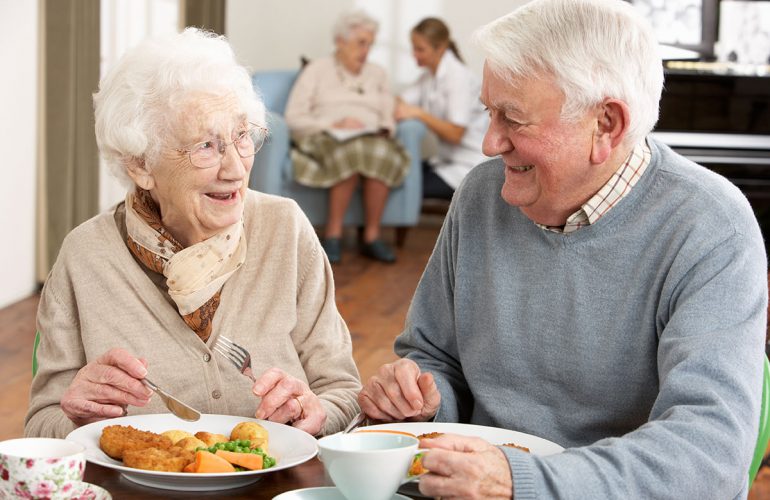Person-centered care has been around for some time now and one of its main ideas is integrating a liberalized diet in senior care communities and especially skilled nursing centers. For decades, a traditional medical or therapeutic diet was provided to seniors which was diseases-focused and restrictive. As a result, many seniors experienced poor nutrition, malnutrition and unintended weight loss. They too, experienced a decline in health and quality of life.
What is A Liberalized Diet?
The liberalized diet is a comprehensive approach to health and nutrition and takes into account many factors and characteristics of each individual. One’s state of health, physician’s orders, treatments, and food preferences are reviewed by an interdisciplinary team. In other words, it takes a highly individualized approach to diet instead of a one-size-fits-all approach.
Taste Matters
Meals should be enjoyable. Restricting fat, salt, sugar, starches and carbs take a lot of flavor out of food, leaving it bland and tasteless. The liberalized diet promotes not only health, but quality of life and mealtime pleasure. An added benefit of the diet is that seniors enjoy what they’re eating and increase their nutrient intake, which leads to better health and well-being.
Choice Matters
The liberalized diet also supports the fact that each resident has the right to choose what they want to eat, and when and where they want to eat. A dietician will oversee these rights and make sound choices concerning what may or may not be included in meals. In other words, everything within reason.
Protein Energy Under-Nutrition
It is well-known that malnutrition is all too common in skilled nursing and it has been largely associated with restrictive, therapeutic diets. Along with a liberalized meal plan, supplements, texture of foods, and time when meals are served should all be taken into account. Another problem associated with malnutrition is protein energy under-nutrition which ranges between 23% to 85% making poor nutrition a very serious and dangerous problem in senior care.
How to Create a Liberalized Diet
The first place to start when designing an individualized diet for a newly admitted senior is to sit down and conduct a comprehensive interview. Address what the individual likes to eat, if he or she has any food allergies or intolerances and their preferred dining environment. Find out when the individual prefers to eat breakfast, lunch and dinner. Do they like snacks throughout the day or night and what kinds do they prefer?
Final Thoughts no Liberalized Diets in Senior Care
Therapeutic diets were thought to be the best way to handle nutrition in senior care for decades. Through the philosophy of person-centered care, it is now believed that the liberalized diet is a much better way to approach the nutritional needs of seniors while enhancing their health and quality of life.
(NOTE: Interested in CEUs for Nursing Home Administrators? Checkout my Nursing Home Administrator CEUs on CEU Academy and try a FREE CEU today!)
More Person Centered Care Articles
- Some Benefits of the Liberalized Diet
- Person-Centered Care and the Importance of Consistent Staffing
- Person-Centered Care and the Importance of Consistent Staffing
- Reflections on Person Centered Care – Part 2
- Reflections on Person Centered Care – Part 1
- Person Centered Care: A Successful Business Model

